Chinese Fruits
Fruits are a vital component of any diet. Most fruits have the role of keeping you healthy and enhancing your immunity. Due to different climates and geographical locations, some fruits that are commonplace in China might be quite strange to people from other countries. Ranging from tropical to temperate, different fruits grow in different regions of China. South China is particularly prominent when it comes to planting and harvesting fruits. Chinese fruits are also quite different to what we would regard as a ‘normal’ fruit. These unusual fruits are a must-try while you’re visiting or living in China. Here’s a rough guide to fruits for you.
Common Fruits in China
1. Banana
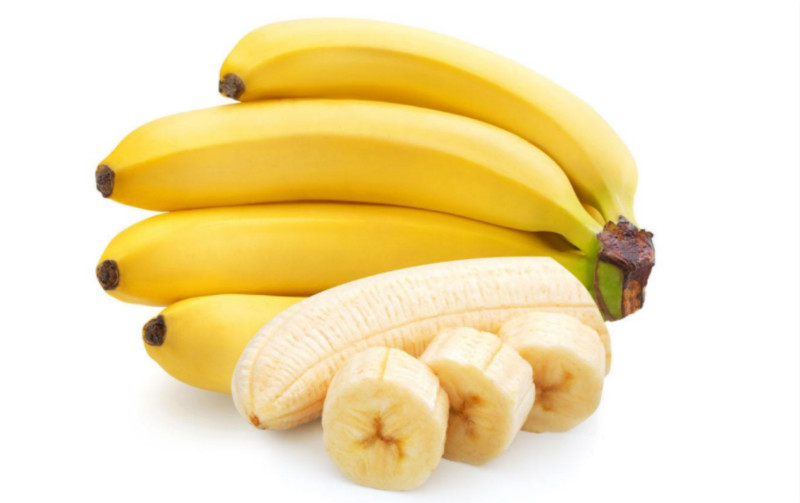
Bananas are a popular fruit in China which are largely produced in Hainan province of China. It is one of the most consumed fruit in China, high in potassium and fiber. Eating them could help lower blood pressure and reduce the risks of cancer and asthma. Its color is yellow on the outside and white on the inside.
Bananas can be eaten deep fried or be made into jam. Banana chips are a snack produced from sliced dehydrated or fried banana or plantain, which have a dark brown color and an intense banana taste. It can also be made into banana pancakes.
2. Mango
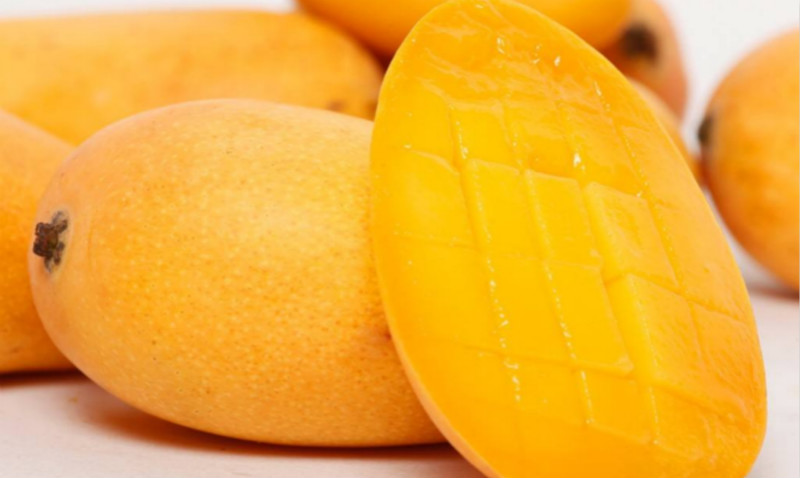
Mango is a common fruit around the globe. China is the second largest mango producing country in the world. They are mainly grown in Hainan province. The season is June to August. There are many kinds of mangoes. They are green when they are raw, mostly yellow when they are ripe, and some are green and red when they are ripe.
Mangoes are generally sweet, although the taste and texture of the flesh varies across cultivars. Mangoes may be used to make juices, mango nectar, and as a flavoring and major ingredient in ice cream and sorbetes. Mangoes are widely used in cuisine too.
3. Pinapple
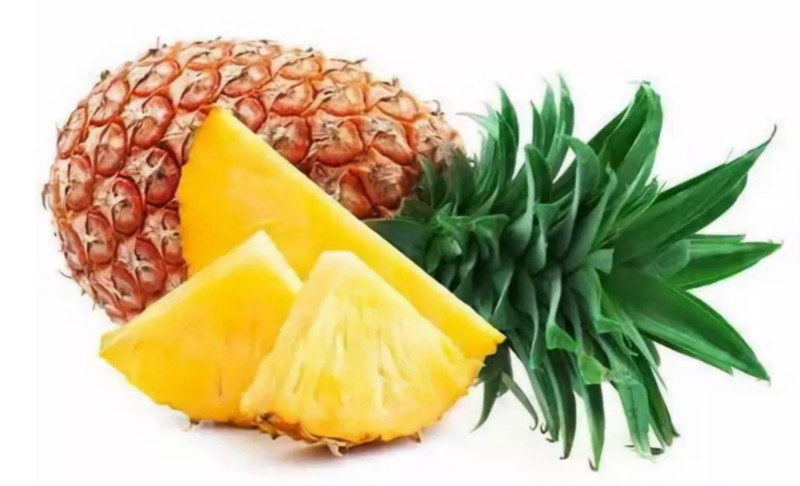
Pineapples are tropical fruit that are rich in vitamins, enzymes and antioxidents. It is the 3rd common fruit in China after mango and bananas. They may help boost the immune system, build strong bones and aid indigestion. Also, despite their sweetness, pineapples are low in calories.
They are usually prepared and sold on roadsides as a snack. Chunks of pineapple are used in desserts such as fruit salad, as well as in some savory dishes, including pizza toppings, or as a grilled ring on a hamburger. Crushed pineapple is used in yogurt, jam, sweets, and ice cream.
4. Apple
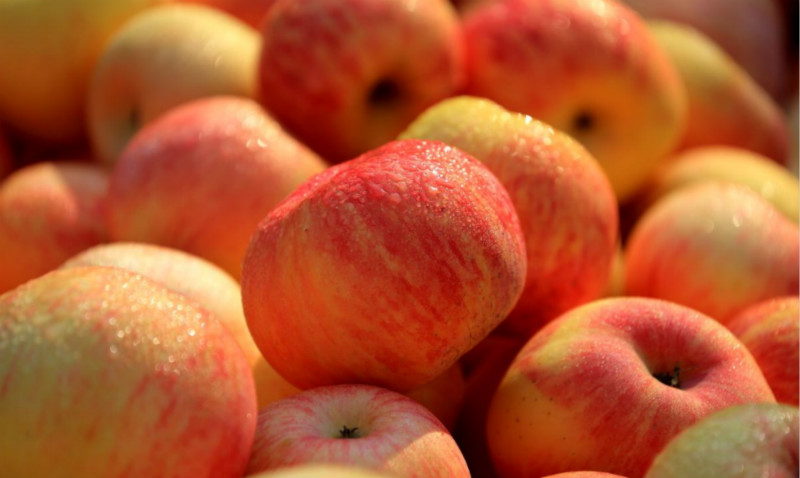
An apple a day keeps the doctor away. This fruit is readily available in most cities and towns, usually red, green or yellow in color. It is crunchy yet juicy.
Apples can be consumed various ways: juice, raw in salads, baked in pies, cooked into sauces and spreads like apple butter, and other baked dishes. It is an important ingredient in many desserts, such as apple pie, apple crumble, apple crisp and apple cake.
5. Pear
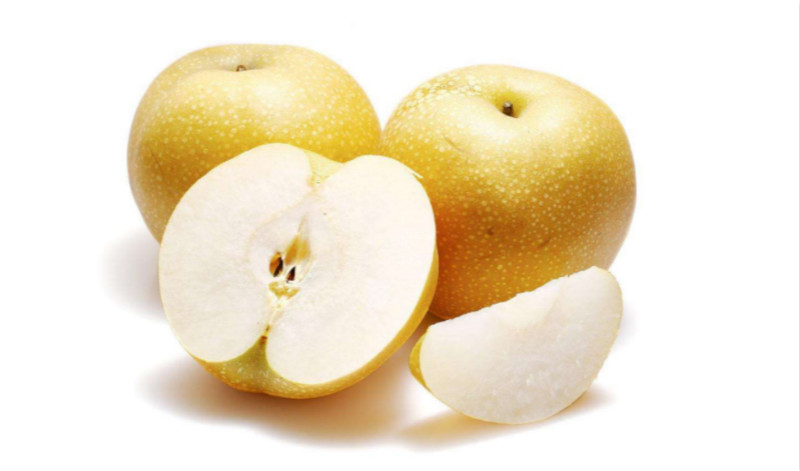
Pears are one of the best fruits to eat as part of a healthful diet. Pears are full of vitamins, antioxidants, and fiber, and their low-calorie count can help with the maintenance of a person’s weight. Other potential benefits of pears include treating diverticulosis and maintaining healthy cholesterol levels.
Pears are consumed fresh, canned, as juice, and dried. The juice can also be used in jellies and jams, usually in combination with other fruits, including berries.
6. Orange
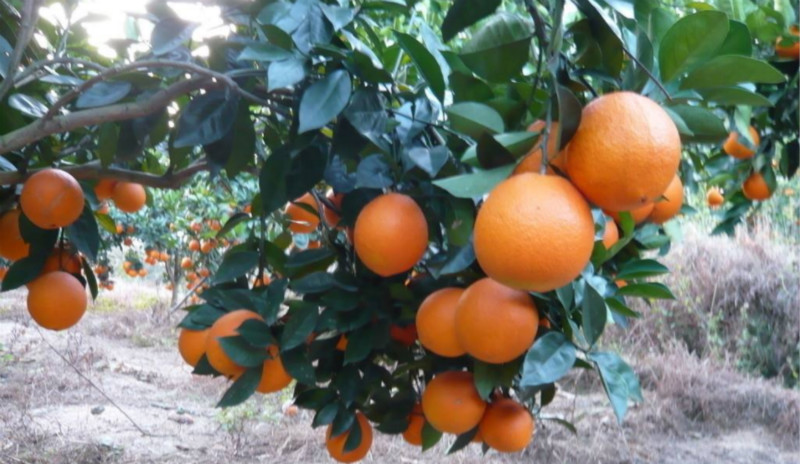
They may boost your immune system, give you better skin, and even help improve your health heart and cholesterol levels. There are common oranges, blood or pigmented oranges, navel oranges, and acidless oranges. Orange pulp is an excellent source of vitamin C, providing 64% of the Daily Value in a 100 g serving (right table). It can be consumed various ways: juice or raw in salads.
Exotic Fruits in China
1. Dragonfruit
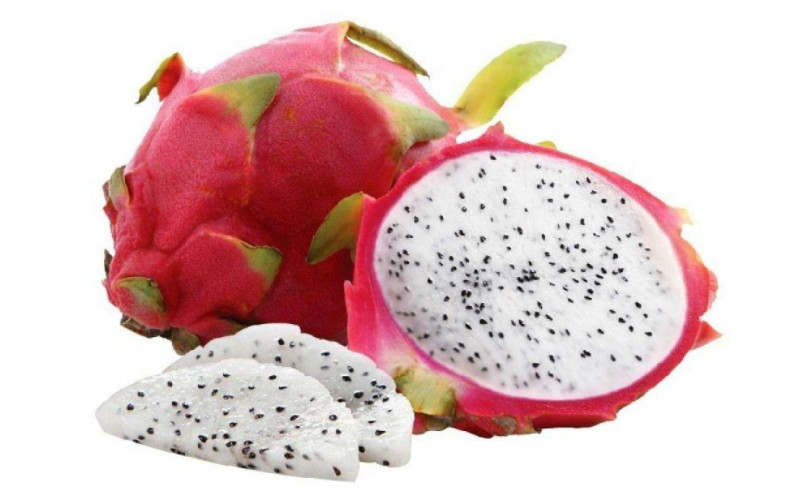
Dragon fruit looks like a soft pineapple with spikes, and can have either pink, red or yellow skin and white or red flesh, with black edible seeds. Its flavor is mildly sweet, like a blend of kiwifruit and pear, and has a crunchy texture.
Dragon fruit is low in calories, yet offers numerous nutrients, including vitamin C, B vitamins, phosphorus, protein, calcium, captin and antioxidants. It has the ability to aid in weight loss, control diabetes, improve digestion, lower cholesterol, and boost energy levels. It may also be protective against certain cancers and heart diseases, defend against bacteria and fungi, and optimize the overall functioning of the body.
2. Bayberry
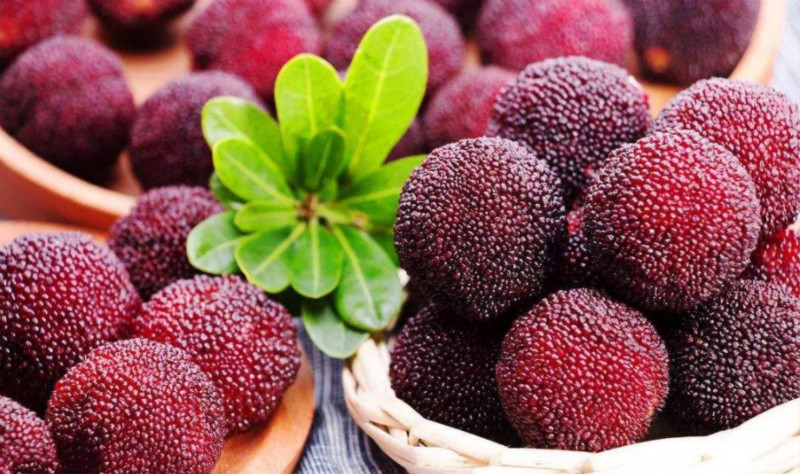
Commonly known as the Chinese bayberry, and the Chinese strawberry (among other names), the spiky red fruit has the tart-sweet duality of most berries, with an edible skin and a pit in the center. There are two types, a sweeter variant for fresh consumption or juicing and a sour variant, to produce dried fruit. Yangmei can also be canned, jammed and fermented into an alcoholic drink.
The yumberry grows in southern China, which is quite popular and easy to encounter in Yunnan province in southwestern China.
3. Durian
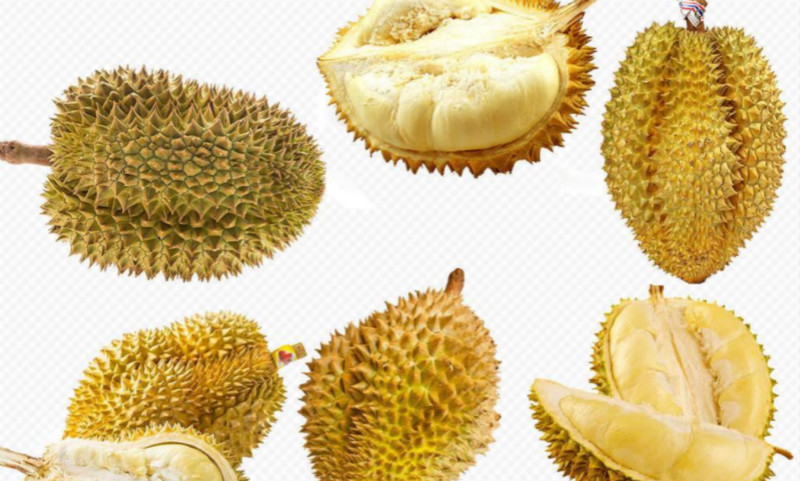
The pungent aroma of the durian makes it one of the most controversial fruits in the world. Some love it very much, while some hate it very much. It’s one of the most expensive fruits in China, which is large in size with a spiky hard exterior and whitish-yellowish flesh. It tastes mildly sweet, almond-like, and almost like a rich cheesecake.
Naturally rich in iron, vitamin C, and potassium, durian improves muscle strength, skin health and even lowers blood pressure. Furthermore, one small durian contains 23g of dietary fiber which is nearly all of your daily nutritional requirement.
4. Rambutan

Rambutan is another relative of lychee (and by extension, the longan) and has a furred appearance. It has a red fury outer skin with a white golf ball size flesh. Once the red skin is peeled it reveals a strikingly similar lychee-like interior, deliciously sweet and sticky flesh that tastes grape-like.
It has a variety of nutrients, including many from the Vitamin C and Vitamin B family. With a high content of fiber and low calories, it makes it appropriate for those trying to lose weight. You could use the fruit to make summer rambutan curry, rambutan martini, deserts among others.
5. Mangosteen
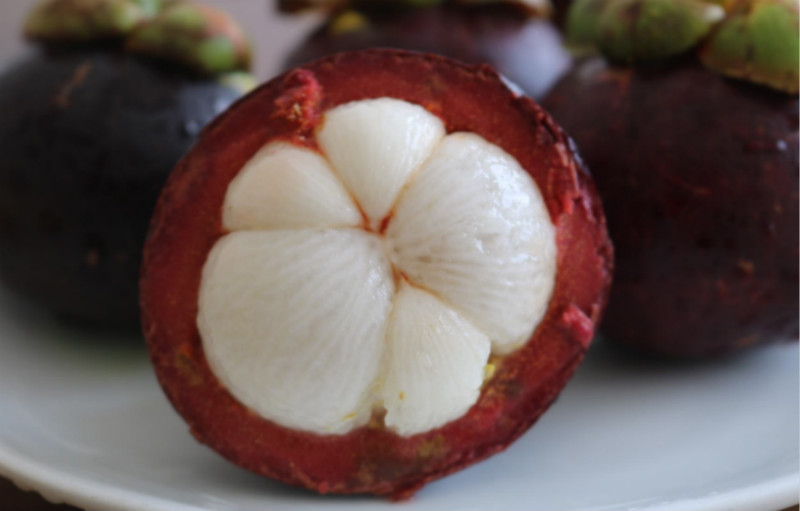
Originating from Indonesia, the mangosteen gradually made its way into local Chinese fruit markets and in the hearts of Chinese people. It is a dark purple fruit with stubby green leaves and a stem, and one opens it by tearing apart the soft bottom to reveal silky white flesh inside.
Mangosteen is rich in antioxidants and xanthones, which has the ability to fight cancer and boost heart health. It has potent anti-inflammatory and anti-microbial properties, which help in providing relief from diarrhea, dysentery, thrush, and urinary tract infections. Mangosteen also helps regulate the menstrual cycle, lose weight, and improve skin health.
6. Lychee
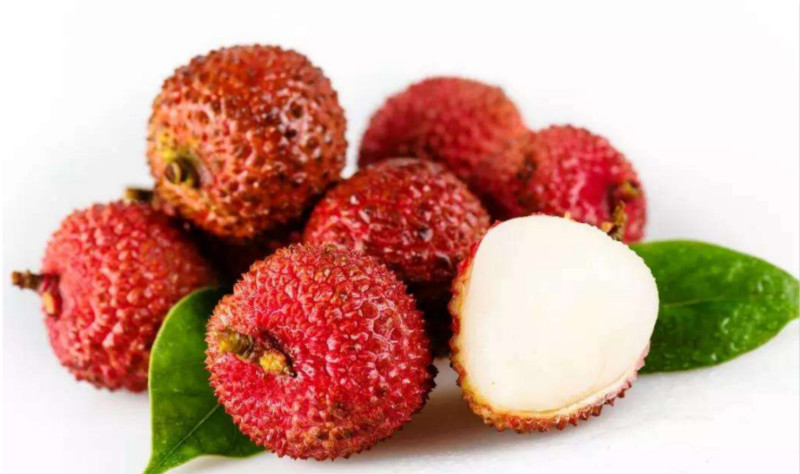
The lychee is also a spiky red fruit, a bit bigger than a cherry, with a pit surrounded by an inedible peel and somewhat translucent milky flesh. China is the main producer of lychees.
It is vastly beneficial to your body since it contains fibers, it’s an antioxidant, it carries potassium which is essential for our body cells, it helps regulate the blood pressure as well as the heart rate and protects you against stroke among other benefits.
7. Pomelo

This is one of the largest citrus fruits that are native to south and south-east Asia. The fruit is pale green to yellow when ripe, with sweet white (or, more rarely, pink or red) flesh, and a very thick rind pith. It tastes like grapefruit, but without the tartness. It actually has a sweeter flavor than other citruses
The pomelo has the ability to boost the immune system, improve digestion, lower blood pressure, and reduce cramping. It also helps prevent anemia, improve bone strength, reduce signs of premature aging, prevent cancer, protect heart health, aid in weight loss, and boost oral and dental health.
Food Culture Travel
Food is an integral part of Chinese culture and it should be an integral part of your trip too if you are a foodie who loves Chinese food. Don’t miss the famous local cuisine at the destination you stay. Most often, delicious food is with beautiful scenery. Beijing, Xian, Chengdu and Shanghai are famous food centers of China. Peking Roast Duck, Sichuan Hot Pot, Mapo Tofu, Kung Pao Chicken… Different cities have different local flavors and different food culture. Choose places to visit according to your preference. We have designed a series of China food tours for you. If you have enough time, you can visit several places to taste the great regional cuisine. Also, if you are interested enough, you can also have chances to make Chinese food.
Recommended Food Culture Tours:
Xian Evening Tour with Dumpling Dinner, Xian Tang Dynasty Show and City Night View
2 Days Beijing Highlights Tour with Beijing Roast Duck and Kong Fu Show
9 Days Beijing-Xian-Chengdu Small Group Tour
12 Days China Paradise Culture Tour by Train
Read more about China Food Culture Tours.
Keep Reading
- China’s Religious Food
- Chinese Desserts
- China’s Regional Food
- Chinese Dining Etiquette and Culture
- Chinese Food Menu
- Chinese Food Recipes
- Chinese Medicinal Cuisine
- Chinese Seasonings
- Chinese Snacks
- Chinese Tea Food
- Chinese Vegetarian Food
- Cooking Class in China
- Food Streets in China
- Restaurants in China











